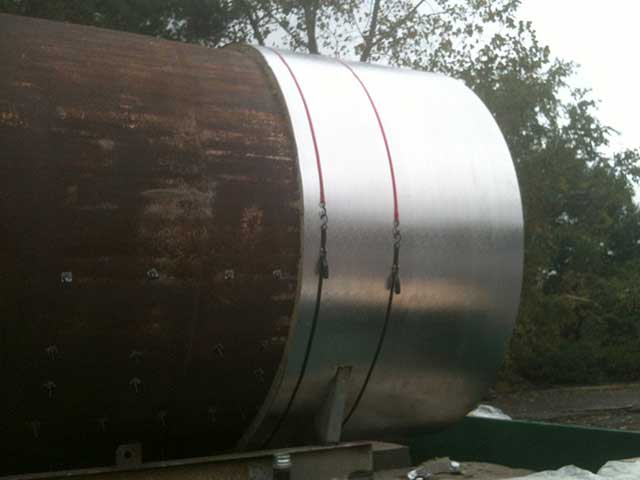Storage tanks are used extensively in the United States for above ground and below ground applications, and trust me, nothing wastes energy more than a storage tank that has no insulation. While there are many options available when it comes to insulating your storage tanks, it is important to understand the differences and choose the solution that best suits your specific needs.
Manufactured steel tanks serve many purposes. The primary use is the storage of heavy fuel oil, liquids, compressed gasses, resins or asphalt binders. Storage tanks vary in type and sizes based on the product being stored and the volume involved. What they have in common is that they require an insulation solution.
To meet industry and regulatory standards insulation is applied to storage tanks to reduce energy costs associated with heating or maintenance of any of the products identified above. The ultimate goal is energy conservation and to reduce the costs of reheating a tank with kerosene, natural gas, electric or butane.

High-density mineral wool pipe and tank wrap being applied to a storage tank.
Common methods for insulating a storage tank:
Method 1: External spray-on insulation system
In this method, a spray-on type of foam insulation is applied to the external skin of the tank at a nominal thickness of 1.5”. Thermal efficiencies gained will dictate the thickness of the insulation material.
Polyurethane foam systems are an example of such a type of insulation. Once the foam has been applied and dried, a finish coating or jacketing must be applied to protect and prevent UV damage. Prolonged exposure to sunlight will degrade any foam systems without some type of jacketing.
Method 2: Injected insulation system
In this method, the outer skin is fabricated with two layers. This double layering of the tank allows for the injection of a foam material between the layers. This foam expands to fill all voids and eliminate air pockets. In this method, the outer shell acts as the protective layer and no other jacketing or protection are required.
Method 3: External wrap or blanket
In this method, the storage tank is wrapped with a layer of insulation wraps. Common insulation material used in this type of application include mineral wool, fiberglass or ceramic fiber. Classified as pipe and tank wraps, each has a unique upper-temperature range. To complete the project, a heavy gauge aluminum or stainless steel jacketing would be required to protect the insulation and at the same time ensure insulation integrity.
Regardless of what method you choose for insulating a storage tank, always consult with a qualified mechanical design engineer for recommendations.


